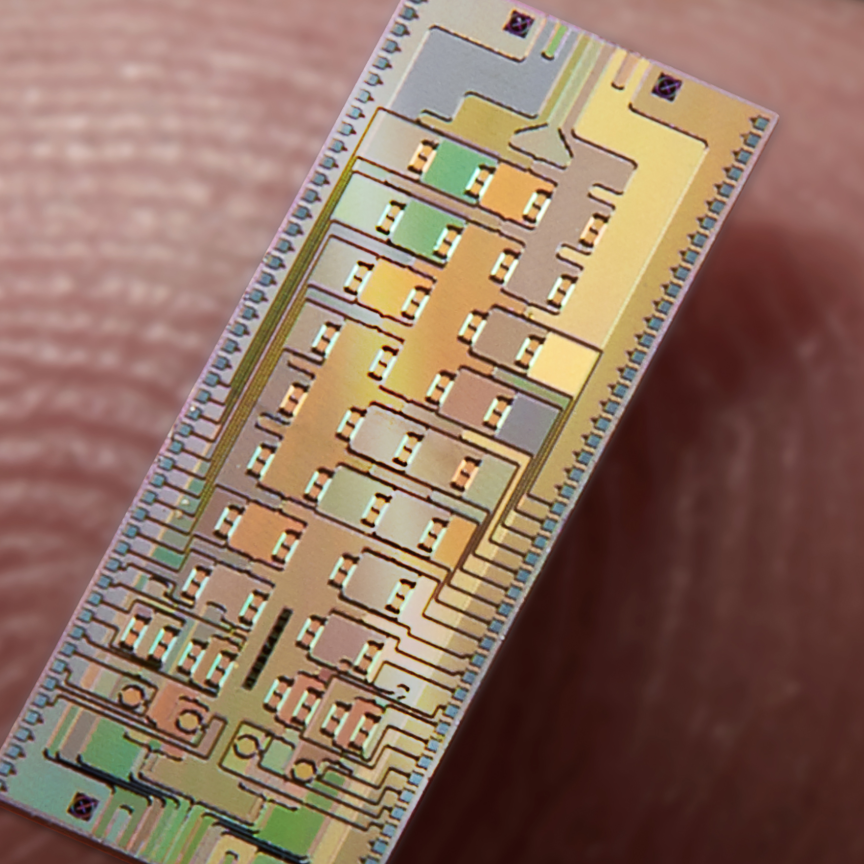Carlos Lee, Epic’s director general, talks to Maria Chiara Ubaldi, co-founder and chief executive of Milan-based CareGlance, a start-up that develops photonic devices for 3D optical coherence tomography and other biomedical and industrial applications
What led to you founding CareGlance and becoming its chief executive?
After studying an MSc and then a PhD in electronic and telecommunication engineering at the Polytechnic University of Milan, I worked for the next 20 years as a researcher and as a manager in the photonics industry. I worked in R&D for important companies like Pirelli Labs and PGT photonics, and my last job was as principal investigator, chief information officer and chief financial officer for Fondazione CIFE, a foundation concerned with the promotion, transfer and evaluation of photonics-based research for renewable energy applications.
In 2019, nearing the age of 50, I decided to change direction and to build something entirely on my own that would be a technical breakthrough with strong social impact. I was confident that I had both the technical know-how and the market-oriented mindset required to make the company a success, and the result was CareGlance, an Italian deep-tech company oriented to the healthcare market.
My aim was to develop an ultrafast, cost-effective swept source laser for optical coherence tomography (OCT). The advantage of swept-source OCT compared with other types of OCT is that the output wavelength is adjustable over a wide range of wavelengths and the scanning speed is faster, which allows for denser scan patterns and larger scan areas. Also, the longer wavelength is safer for the eye, so a higher laser power can be used, which enables images to be obtained in real time from deeper layers of tissue. In the medical sector, this makes the technology ideal for non-invasive diagnosis and monitoring of eye and heart diseases and cancer treatments.
For industry, applications include surface quality monitoring of materials, like ceramics, polymers and metals.
Another important goal was to make the technology small enough to [fit] into portable OCT point-of-care devices for mass use in the community.
How has the company developed?
At a financial level, we’ve been careful to follow a strict cash flow method, avoiding unnecessary expenses and keeping within budgets. In the medium term, we will require funding and we’re currently in negotiation with several venture capitalists in Italy and Europe.
Regarding the technology, we have the IPs and are currently prototyping a 1MHz-swept source for OCT systems suppliers, to enable true, real-time 3D imaging. Our mid-term product strategy forecasts a fully integrated version of the optical hardware on wafer level for volume production targeting various markets. Our OCT micromodule is based on monolithic and hybrid integration, enabling compact and portable devices for different applications, ranging from health care to Industry 4.0, in particular sub-surface quality inspection in automotive.
We aim to place our swept source for OCT in the top segment of OCT lasers, where its USPs will be 1MHz scan speed, high coherence, compactness and reliability, thanks to the absence of mechanically moving parts inside the laser itself. I chose this product because I was sure the microcomponent-based, high-speed, external cavity laser would be the first of its type to enter the market.
Our strategy is to secure three or four important customers in different sectors and to find partners to develop the integrated platform. The advantage of our product is flexibility, as it can operate at different wavelengths and in different configurations – for example, fibre pigtailing and free space – so we can adapt to various customer needs.
In terms of a business model, it will be too expensive for us to target the final user, so we plan to outsource manufacturing and focus on R&D – designing, developing and testing new components and materials and building prototype laser units.
What is your vision for the company over the next five years?
The best strategy for a deep-tech company like ours, and a natural exit in consideration of the constraints of venture capital, is to be absorbed by a larger company interested in deploying the technology. I would like to imagine that our technology for health care, at least for the ophthalmology sector, will have been sold or absorbed by a bigger company in the field. Of course, a set-up like ours cannot survive with only one product, so we will need to diversify.
If you started again, what would you do differently?
Raising investment for CareGlance was the first time I negotiated directly with venture capitalists, and I wasted a lot of time answering detailed questions and waiting to hear if they were interested or not. If I started again, I wouldn’t commit myself to only one investor, I’d approach several investors in parallel to get a faster response. Similarly, I lost several months waiting for a definite response from a prospective customer; if I did it again, I’d be more aggressive in targeting customers by contacting the chief executive directly and asking for a clear ‘yes’ or ‘no’.
What is your advice for the next generation of entrepreneurs?
First, it’s important to get experience working in start-ups, as this will give you a unique opportunity to get a 360 degree overview of how a company works. In this way, you can come to know your own strengths and weaknesses and find out what you’re most suited for. Secondly, although you will need to take risks, it’s important to stay grounded in reality. Don’t build a start-up before you’ve identified a market need – after all, the world’s full of beautiful research ideas, but only a few make it to become real breakthroughs.
Thirdly – and this is addressed to females and the photonic industry in general – although more young women are studying STEM subjects at university, from my experience in attending numerous conferences and exhibitions, there is an alarming lack of women in senior management positions in photonics. I think the major reason for this is the hyper-conservative attitude of male senior managers who are not willing to adopt strategies that play to women’s strengths, particularly the soft skills that are crucial for successful team working.
These skills include coaching and mentoring, inspirational leadership, conflict management, organisational awareness, adaptability, teamwork and achievement orientation. Women themselves and senior management need to recognise both the valuable contribution women can make in these areas and also the advantages of giving women leadership roles so as to implement their skills to achieve more effective teamwork across the company.


